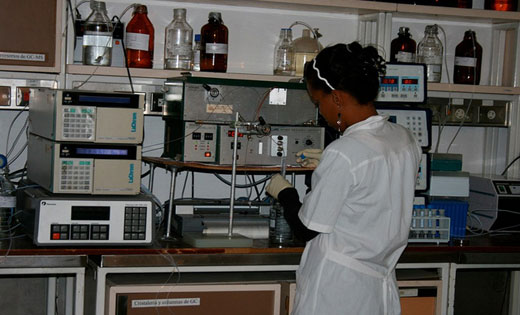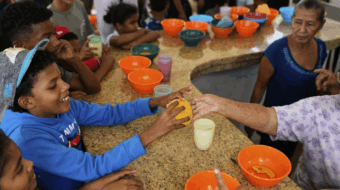
Princeton University students have a problem, one not of their own making. Since March, seven of them have contracted bacterial meningitis due to the type B form of the meningococcal microorganism. Vaccines that work against microbes causing the vast majority of cases of bacterial meningitis are readily available in the United States, but not a vaccine capable of preventing type B meningococcal meningitis. As a result, Princeton students are at risk. Yet 55 million doses of a type B vaccine have been administered in 15 other countries, mostly in Latin America.
The vaccine’s name is VA-MENGOC-BC, and it comes from Cuba. Under the anti-Cuban U.S. economic blockade, Cuban exports to the United States are forbidden.
Panic at Princeton induced the U.S. Food and Drug Administration to authorize the Centers for Disease Control and Prevention to import enough BEXSERO Type B vaccine developed by Switzerland’s Novartis Corporation to vaccinate 8,000 Princeton students. BEXSERO is new and has recently been cleared for use in the European Union and Australia.
Meningitis means inflammation of the lining of a victim’s brain and spinal cord. Without treatment for bacterial meningitis, damage to underlying structures is likely and many survivors end up with disastrous handicapping conditions. Even with treatment, 10 percent of infected persons die. The same causative bacterial agents can be responsible for life threatening blood stream infections. In 2000 meningococcal disease caused 171,000 deaths worldwide, according to the World Health Organization.
Vaccines exist for preventative use against the three microorganisms most commonly associated with bacterial meningitis, meningococcal bacteria among them. Vaccines are available in the United States for warding off four types of the meningococcus. There is no vaccine in the U.S. directed at the fifth, the type B form. Currently type B disease accounts for one third of all U.S. meningococcal cases.
Cuba’s public health system encompasses not only curative and preventative care but also biomedical research and manufacture. In response to an epidemic of type B meningococcal meningitis that began in 1976, Cuba’s Finley Institute, led by Dr. Conception Campa, developed VA-MENGO-BC, carried out trials, and readied the vaccine for use beginning in 1991.
At the epidemic’s height, the general incidence of type B meningitis was 14.4 victims per 100,000 people. The rate for children under age 6 exceeded 160 per 100,000. The general infection rate in 1989, prior to the vaccine’s introduction, was 6.5 per 100,000. It fell to 0.8 per 100,000 in 1993, and to 0.2 per 100,000 in 2006. Observers worldwide concur that the vaccine protects individuals and keeps the illness from spreading. Epidemiologists have documented comparable success in other countries, notably in Brazil where millions have received the Cuban vaccine. Adverse effects have been minimal. Consistent with its design, the vaccine has been shown to protect also against type C meningitis.
Scientists have experienced difficulties in arriving at a useful type B vaccine, mainly because material in the microorganism’s polysaccharide coat used as potential antigens are often not recognizable as foreign material by the human host. Consequently they fail to stimulate production of protective antibodies. Novartis touts its BEXSERO vaccine for the broad spectrum of type B protection it provides, the result of four new antigenic components used in its manufacture. Cuban scientists, however, were pleased with what looked like protection their vaccine offered against type B strains “that differ from the vaccine strain.”
Apart from technical difficulties necessitating extra time and money and the lack of an epidemic to address, it is not clear why the United States never developed an anti-type-B meningococcal vaccine. But why Cuba did so is clear from Dr. Concepción Campa’s explanation in 2007.
Campa told an interviewer, “Cuba has a research approach that doesn’t only take into account the Cuban population’s health, but also global population health, especially the poor of the world … In many countries, including the United States, children of all ages die from meningitis B.”
The interviewer asked, “What countries have been using the Cuban vaccine? Is it sold, donated or traded?” According to Campa, “The vaccine has been donated to countries in Africa, to Uruguay when there was an outbreak there, and is used in vaccination campaigns in Brazil, Colombia, and other countries. Regarding vaccine sales, we generally take into account where a vaccine will be administered. It’s not the same to sell a vaccine to the private sector, where they charge an arm and a leg, as to a public health system for vaccination campaigns or when there’s an epidemic … Cubans in general have a very special connection with other countries because wherever there’s pain it’s our pain… [D]eveloping countries have fewer possibilities for easing that pain.”
Photo: A researcher at a huge Cuban biotech center on the outskirts of Havana, which pioneers in developing new vaccines. PBS NewsHour CC 2.0










